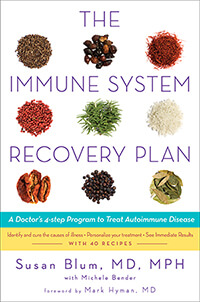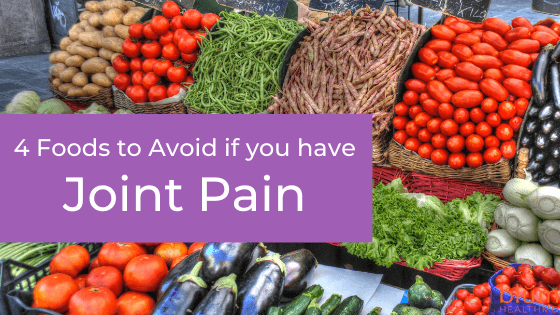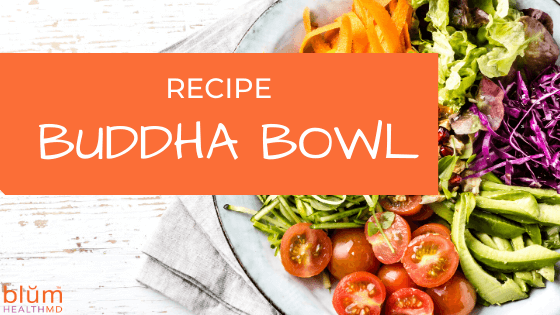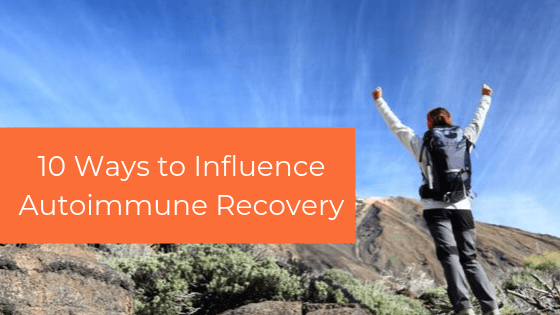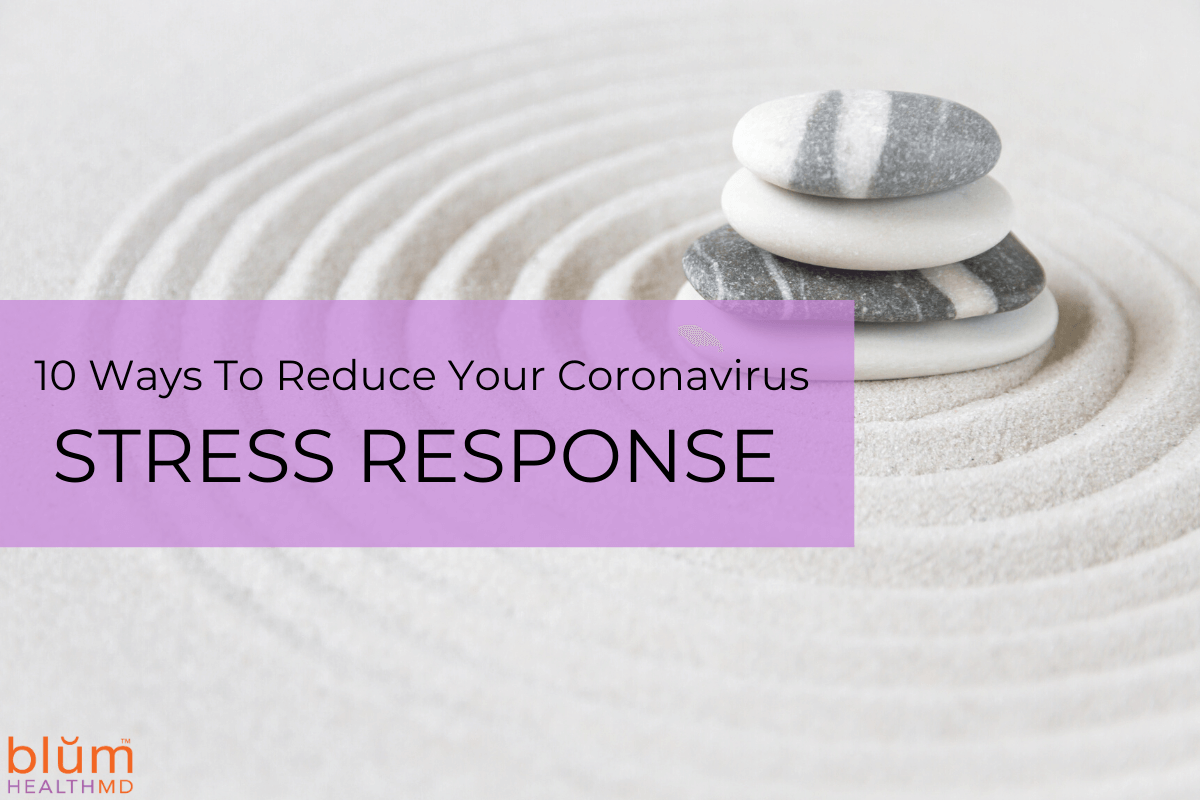
Out of nowhere we’ve been blindsided. Two months ago we never could have imagined the Coronavirus pandemic that is literally bringing the world to a halt.
We want you to be safe. We want your loved ones to be safe. And when you stay safe, you help the greater community stay safe, too.
And besides everything you can do physically to ensure safety — washing your hands repeatedly and staying at home as much as humanly possible (yes, isolating) — you must also give your stress response a break. Seriously. Your immune system depends on it.
One of the common threads of Dr. Susan Blum’s books, The Immune System Recovery Plan and Healing Arthritis, and in all our clinical work at Blum Center for Health is this: Stress damages the immune system.
In order to keep your immune system strong, you must employ strategies to minimize the effects of stress.
10 Ways to Reduce Your Coronavirus Stress Response
Create News Blackout Periods — Constantly scrolling, listening to the radio or watching television puts your body on unrelenting periods of high alert. Put in place a news plan. When will you consume your news? I recommend once in the morning and once in the evening for no more than 60 minutes. During the rest of the day, shut off the notifications on your phone, turn off the television and stream podcasts and music that makes you feel good.
Use Social Media Wisely — Your feed is inundated with COVID19 related news — some of it accurate, some of it false, much of it alarmist, and you likely have friends and family that are in pure panic mode. Perhaps you need to mute a few people, but more than likely you need to step away. Just as I’ve suggested News Blackout Periods, do the same with social media. No, you don’t need it to stay connected to people. You know who your friends and family are — reach out to them the old fashioned way — call them!
Reframe Your Worries — Here’s an example: My mom is 87 and lives with me. I’m doing everything I can to minimize her exposure. And, my father-in-law is in assisted living — while the building has been closed to visitors for a week, we received notification that someone who visited a resident has since tested positive. I’m a worrier. But, every time I start to feel myself getting worked up, imagining worst case scenarios, feeling that too-familiar constriction in my chest, tingling arms, combined with swallow breathing, or most likely, holding my breath, I ask myself: “Does my worry change anything in this moment? Is there anything that I can change that would alleviate the worry?” If the answer is yes, I do it. If the answer is no, then I shift my thinking to: “What are my blessings in this moment?” My mom is fine, I’m doing everything I can to keep her safe. My father-in-law is okay. There are no reported cases at his home, and they’ve been closed to visitors for a week. I’m grateful for the sunny day. I’m grateful for the food in my fridge. I’m grateful for an internet connection so that I can stay in touch with my family and friends.
Get Out in Nature — Take a walk. Research shows that walking in nature has a calming effect on your immune system. Take one long walk, or you can take several mini walks throughout the day.
Breathe — If you’re already meditating, awesome! Now is a great time to deepen your practice. If you’ve been “too busy” to start meditating, well … opportunity knocks! This is the perfect time to get started. Use an app like Headspace or Calm, and start with 10 minutes a day. There is clear evidence that a mindfulness practice reduces stress, promotes healthier bodies, including taking care of your immune system, and over time, teaches you how to respond to stressors rather than react to them. That comes in pretty darn handy in times like this!
Choose Movies and TV Shows Wisely — Watching disaster movies, action movies and Debbie Downer dramas and documentaries are probably not the way to go right now. Your brain and your body absorb all the negativity, elevating your stress response — not only in the moment, but it fuels your worries and plays a role in disrupted sleep. Choose uplifting, fun, funny shows to watch. I bet you have a list!
Use the Time to Nest — When was the last time you were told to stay home? I mean, were you ever told to stay home? Yes, it’s a very worrying time, but you can also look at the bright side. What projects do you have that have been on the back burner for when you have more time? Clean out closets, organize your home office, spring clean, get out the clothes that need mending, make your space feel homey and light. You might even try some aromatherapy — use your diffuser, if you have one, or light candles (preferably soy-based, rather than paraffin).
Have Fun with Homesteading — What do I mean? Bake from scratch, include your kids in cooking meals, try some new kitchen skills, like sprouting beans or preserving lemons. Or maybe there’s an InstaPot recipe you’ve been wanting to try. Now’s the time!
Connect with Friends and Family via Video (or Telephone) — Just because you’re home doesn’t mean you have to be isolated from your friends and family. In fact, with nearly everybody at home, it couldn’t be easier to connect with those you love. Use video to make lunch dates or connect in the evening rather than watching television. Do you have older people in your life that aren’t comfortable with technology? A good ole phone call will make their day (and likely yours too.)
Eat Real Food — During times of stress many people lean on packaged foods, and sugary, empty calorie foods — these deplete your immune system! Focus on antioxidant-rich vegetables and fruits — at least half your plate at every meal — healthy fats, like avocado, wild caught salmon, nuts and seeds; and whole grains, like gluten-free oats, wild rice and quinoa. Legumes are a great source of plant-based protein.
What are some of the ways you reduce stress during trying times? Share them. We’d love to hear.
Wondering what else you can do?
Read Dr. Blum’s blog post: Tips for Boosting Your Immunity
Check out Dr. Yee’s Fire Cider Brew to help boost your immune system.
Meet Melissa: Melissa Rapoport is the Manager of Health Coaching and Lifestyle Programming at Blum Center for Health in Rye Brook, NY. She combines her graduate work in Developmental Psychology with her education in nutrition, health and coaching to create highly individualized programs that result in lifetime change. A contributing author to three international bestselling books, Melissa’s greatest joy is her relationship with her two daughters. To learn more about Melissa’s coaching practice at Blum Center for Health, click here.
